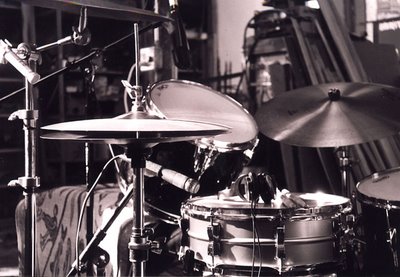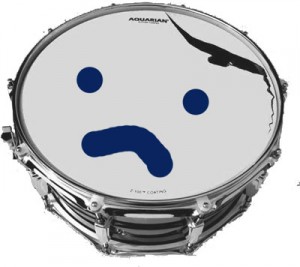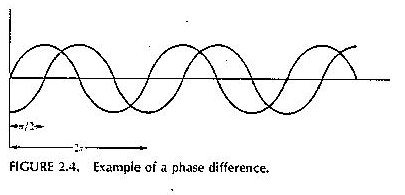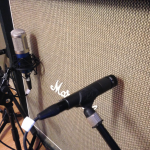Song of Living Praise – Lyric Video
Song of Living Praise by The Destinysong Project. This is an original song recorded live in the studio.
Personnel:
Electric Guitar/Lead Vocal – Michael
Acoustic Guitar – Travis
Electric Guitar/Keyboards: Julian
Bass – Tom
Drums – Dave
Vocal – Liz
© 2014 Destinysong
Music and Lyrics by Michael Burwell
Drum Mixing Technique
“The farther one travels, the less one knows.” George Harrison, The Inner Light
Mixing has a lot of moving parts and can be a very intricate process that, no matter how much training you get, just flat out takes experience to get better at. Experience just flat out takes time. And the farther I travel down this road, I sometimes feel like there is more and more I do not understand. This whole thing is not a matter of arriving anywhere, but rather, trying to do better all the time. It can be frustrating, but also fulfilling. Recently, I learned something new about drum mixing which is very satisfying.
 To break this down for the uninitiated, imagine a song with a full band. You’ve got a singer and a backup singer doing harmonies. You’ve got an electric guitar player, an acoustic guitar player, and a keyboard player. Then finally we’ll wrap up our example band with a bass player and a drummer. In this kind of setup, a mix engineer is probably wrangling a minimum 16 tracks of audio. It’s probably more like 20-24 with multiple guitar parts, vocal takes, keys, etc.
To break this down for the uninitiated, imagine a song with a full band. You’ve got a singer and a backup singer doing harmonies. You’ve got an electric guitar player, an acoustic guitar player, and a keyboard player. Then finally we’ll wrap up our example band with a bass player and a drummer. In this kind of setup, a mix engineer is probably wrangling a minimum 16 tracks of audio. It’s probably more like 20-24 with multiple guitar parts, vocal takes, keys, etc.
So now you’re facing 20 or more individual tracks of audio with the goal being a 2-channel stereo mix that your wife will say. “I like that one” when you’re done. It’s pretty normal to start your mixing process with a cup of coffee and a few episodes of House. At least that’s how I start. When that is done, solo the kick drum and begin.
The House That Drums Built
Why start with the drums? Because in a song with drums, they are the foundation you are building your “house” on so-to-speak. In beat-based music, you need a solid foundation to insure that things don’t fall apart in the future. If you can rely on your rhythm section later in the mix, you will save yourself a lot of time. A typical mix will take anywhere from 8-12 hours to complete. The first hour spent dialing in your drums can really make the difference between whether you’re going to spend 8 or 12.
The bottom line is that you really need to get the drums right, first. The other stuff can be tweaked around with later, but if you mess up on the drums you may end up having to scrap a good bit of work down the road if you have not set up your foundation correctly. If all you’ve got is time, this is not a big deal. In a pro studio dialing in drum sounds can take the better part of a few days. I have the luxury of knowing my equipment and room so I can dial a drum sound for a new project in a matter of hours, typically. And for all the Destinysong stuff, we can move even faster if we don’t use a new kit, or change things up too much – sort of a power up and go situation. But what happens when you’ve done all the right prep and later you still don’t like what you ended up with? You can re-record everything, or you can use some pretty cool studio trickery formerly only available to big budget studios.
Drum Replacement

Sad Snare
Drum replacement is the de-facto new norm in almost all music these days. I don’t do it and I’ll explain why in a sec. For those of you who do not know what drum replacing is here’s a fly by: Let’s say you’re going to record a worship song that has drums on it. The drummer plays a 5-piece drum kit (kick, snare, 3 toms) with hi-hats (type of cymbals), 2 crash cymbals and a ride cymbal. You use 9 mics on the whole kit to capture the drum performance as the drummer plays it. The actual live drummer is recorded. Later, when you are mixing the song, you realize that you don’t like the way the snare sounds as it was recorded. I.e. in its original state, it doesn’t fit the song. You have minimal options – one is to ask the drummer to come back in, set up the whole kit using a different snare, and re-record the song again. But c’mon this is 2014! Why take all that time? There are a few ways to replace the snare on a recording, but it goes something like this: every time the drummer on your recording hits the snare, replace that sound with something else. These days, super-sounds are available in downloadable sample libraries to anyone with a few bucks and an internet connection. So why not use a snare recorded in a big studio in LA by a well known drummer on a very expensive kit using very expensive mics? You bet, let’s do it. There are several ways to skin this cat (sorry cat lovers) but basically, it’s a matter of triggering the super-sound whenever your newly minted lame-sound plays.
So now you have your drummer, on your song, playing what they played, but the snare is replaced with a new sound. And man, check it out, the snare sounds uber-rad. Hmm, now that’s we’ve done the snare, why not replace the toms? The kick? Heck, let’s replace the whole kit while we’re at it! Sarcasm aside, would you be surprised to know that most of the drums on all the songs you listen to that were recorded in the last few years have no “real” drum performances to speak of on them? Yes, a real live human being played the original part, but the sound you hear is all replaced drums (to say nothing of quantizing, stretching, snapping, etc. where you can actually move the drum performance around. Is that kick drum a little behind the beat? No problem, bam! Just snap it to grid. Yes this can be done. I’ll save that for another day, if ever). A typical scenario is to replace all the drums and keep only the overhead or cymbal mics from the live performance.
It begs the question – is drum replacement bad? I don’t think it is. Using technology to create art is fantastic and if the end result is what the artist (which anymore is as much the engineers and producers as it is the musicians) desires, then I say go for it. I just don’t do it unless I have to.
A couple years ago I had original tracks sent to me for mixing an album – they were recorded in another state. The kick drum was recorded so bad that I replaced it throughout the project. It was a matter of necessity, so I did it. Another time, I replaced the kick and snare on a pop tune I mixed since I wanted a very specific sound that we had not recorded and the drummer on the track was out of the country so I couldn’t exactly get him back in the studio easily. Replacing the drums made sense there as well. I’ve done other things as well up to and including the whole kit.
But that said, I don’t replace drums anywhere on about 99% of the music I record at Destinysong. Why? Because some of my favorite music, new and old, has real drums on it. Plus I have a drum room in the studio and drum mics for the kit. I always like a challenge and I figure, if I cannot get it right with that setup, why do I have a studio? I could be recording drums in a closet and then just replace them all later. Also, the onus is on the drummer to get it right in this scenario. Young or inexperienced drummers don’t learn much in a studio when they know their drums will be replaced. But if a drummer knows that their performance IS the track – well they have to learn good studio technique.
So more power to ya’ if you replace drums, I just don’t do it very much.
Mixing Drums

Basic Drum Mic Technique
I’ve been happy with my drum mixing in the past. But recently I read an interview with a top-name engineer who was talking about room mic(s) for the drums. In it he said that he often dials in the room mic and from there adds in the other drums to compliment the room mic mix. Huh. Interesting. This is specific to rock music, and most of what I do is in that vein. I’ve read this advice before but over the past few years I have painted myself into a corner with the way I handle drums in a mix. One thing I was regularly doing is chopping the legs out from under the room and overheads (I.e. eliminating the lower frequencies) thereby isolating the cymbals. Then as I desired, I would add a little room width. This is a totally acceptable technique (especially when replacing some or all of the drums). But when I read this article I started to question how I was handling things and decided to go back to the drawing board.
Using a drum track recorded just a few days earlier I took everything off the channels (i.e. EQ, compression, etc.) and listened to the raw drums, as recorded, as played live. Then I muted everything except the room mics. I listened to that for awhile and realized I didn’t like the placement of those mics. Funny how it comes down to the most basic of things sometimes. Anyway, that notwithstanding, I got a pretty good mix using the room mics only and began to add in the other drums. I used about 50% – 60% less processing on the drums than I normally do (i.e. less EQ, less compression, less reverb, less of everything including side-chaining techniques, etc.). Once I had the drums sounding pretty good, which took maybe 30 minutes, I began to re-contruct the mix from there.
Results and Conclusion

How does he always know?
Last night my son played me that track because he had added some other guitars and a vocal on it and posted the demo out to SoundCloud (an online service you can post music to and it can be replayed on any device accessing the internet - very handy since now we don’t have to burn dozens of CDs just to listen to demo mixes in the car, etc.). We played the song on the TV sound system. The drums were killing. Really just killing. It was such a good sound.
I was pretty stoked about this since my experiment was last week and I didn’t expect to be that impressed with the drum sound when I heard the tune on a pretty bad stereo system. So I’m going to explore this whole technique more over the upcoming weeks. I’m excited I learned something. It only took me 5 years to get back to basics on this aspect of mixing, but I’m glad I am discovering new things.
And finally, just in case you don’t think recording is a highly complex and difficult task, here is some unhelpful advice from a popular forum for all things studio: “Contrary to popular belief there is no one correct way to record drums. In fact there are literally hundreds of ways to record a drum kit.”
Now I gotta go and fix the position of my overheads. But first, I’ll put a pot of coffee on and fire up Netflix.
In n’ Out of Phase
I subscribe to a lot of recording newsletters, groups, etc. and recently an article came through my feed that led to a big change in our recordings. It was titled something like “Recording Basics for Beginners.” The title alone meant that just by clicking on it I might be confessing I was a noob. I looked over my shoulder and feeling secure that I might not be caught loitering in noobville, I clicked through and began to read the article. In it there was a little comment that has transformed a few things in the studio. The blurb wasn’t much – it said something like “…assuming your mics are in phase of course.” I had an ah-hah moment right there. You see, I like to set and forget. And we set up the drum position and mics in the drum room a couple years ago and really have never changed anything since. Mic choices and angles, pre-amp settings, EQ, compression, etc. everything is basically set the way we want it and we get a good sound. But sometimes I’m missing that little special something and I am compensating in the mix more than I think I need to. Before I go on, allow me to explain a phase issue as quickly as possible:
Phase Simplified
Imagine in your mind a sine wave, we’ll call it Sine Wave 1, and this wave represents an audio signal. Let’s say it’s a guitar playing. Now imagine a second sine wave, we’ll call it Sine Wave 2, that is the same audio recording of the guitar as the first signal, only it’s a little delayed (kind of like me being late for dinner – sorry Dina!). Looky here:

See how Sine Wave 2 is occurring after Sine Wave 1? To keep this discussion super-short, I’l cut to the chase. In a recording studio there are many times that more than one microphone is used to record an audio source. Take a look at the mics we set up on this guitar cabinet:

When the guitar player jams – we record the performance. Each mic records the same thing, but if they are not placed exactly right, one signal will be slightly delayed, or behind the other. A tiny bit of this is okay. But any more than the tiniest bit (when I say tiny, I mean milliseconds) and problems arise. If the delay is too great, the two signals are considered “out of phase.”
So What’s the Big Dealio?
If we play the recording back and the mics are out of phase, we not only cancel out some bottom-end (bass frequencies) but if they are terribly out of phase then we start to get some high end (trebly) flutter. The worse it is, the worse the sound. Things just sound bad.
In special circumstances phase can be our friend, but for my purposes here, we’ll assume that Mr. Out-of-phase is a bad guy. And if you stack one Mr. bad guy on top of another, and another and another, well it just adds up to a whole gang of baddies that can adversely affect your final product. Consider that on a typical recording session we use up to 10 mics on the drum kit simultaneously!
My Epiphany
Epiphany can be defined as a manifestation of the divine. I really feel that as we embark on this behemoth of a journey, God is watching over us. In this case, a small comment in a rather uninteresting article lit the spark of an idea that translated into me re-checking phase in the studio. Not only all over the drum kit, but in the amp room and more. I had small phase issues all over that I was fixing in the mix! You can imagine the thrill I had when a simple phase change brought out all sorts of beautiful frequencies in the drums! Or how happy I am at how focused the guitar sounds when the mics are perfectly in phase. I do believe that the Holy Spirit led me to that article, and that comment, and ultimately into the studio to fix this. You may not believe God works like that, but I do, because it has happened so many times.
The Bottom Line
I’m so happy about this discovery and ultimate fix since it means our raw recording tracks are now more…pure. The better the source material the better the outcome. This will allow us to make better music for the glory of God. And I think that matters.
The Website is Live
It’s finally here! The new website is now live. This means a lot to us. We hope to make this site the central point of communication for all things related to the project. In our Contributors section here songwriters can find resources they need to help them get started on the process. In our About and Vision sections you can read about how we got started and what we’re all about. You can watch videos and listen to the music. Also, you can read about what we need to move this project forward by checking our the Give area.
It’s launch day and we’re stoked. In fact, one of our songwriters just let me know that he has written two new worship songs. Right on. Looks like we’re getting some momentum going. :)
We’re Launching!
We are embarking on a journey that is exciting and intimidating at the same time. 200 songs in 24 months? Seems crazy I know but we’re going to go for it with all we’ve got. We have some very talented and Spirit-led songwriters out there who have a heart to reach the lost. We have a recording studio where we can record all this stuff (albeit in need of quite a few upgrades). And we can create lyric videos and post them on AllAboutGod.com pages. So all the elements are there – it’s just a matter of getting organized and seeing it through. Laozi said that a journey of a thousand miles begins with a single step. Chinese philosopher or not, that dude was a little optimistic. I have taken about 100 “single steps” to get this project going and I feel like we haven’t even really started. Ha ha. Okay, so I’m exaggerating, but the attached pic will give you a feel for where I am at right now as I try and figure out how to launch our new website. I gotta remember that “more music. more joy.” thing. More music more joy more music more joy more music more joy.
